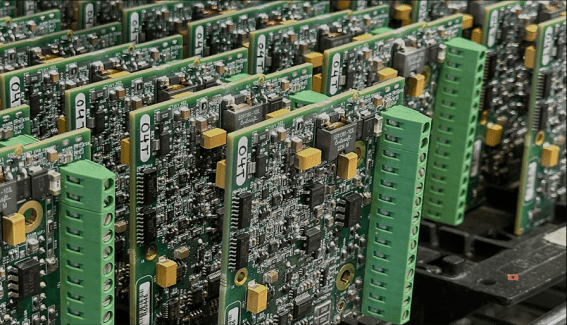Electromechanical assemblies are integral to a variety of industries, acting as the core of systems that merge electrical and mechanical components to execute complex tasks. Industries such as aerospace, medical devices, telecommunications, and industrial automation heavily rely on these assemblies to meet their specific operational needs. However, these assemblies must often be customized to ensure they perform optimally in their intended environments. Customization involves not just meeting basic functional requirements, but also tailoring the design, materials, and manufacturing processes to the unique demands of each industry.
Understanding Industry Requirements
The first step in customizing electromechanical assemblies is to thoroughly understand the specific requirements of the industry they will serve. Different sectors have distinct standards and regulations, particularly in fields like aerospace and medical devices, where safety and reliability are crucial. For example, aerospace components must endure extreme temperatures, vibrations, and pressures, whereas medical devices must meet stringent criteria for biocompatibility, sterilization, and precise control of electrical currents.
To ensure the assembly meets all necessary standards, engineers and designers collaborate closely with clients. This collaboration helps to fully understand the environmental conditions, operational demands, and regulatory standards the assembly must satisfy. This understanding forms the foundation for all subsequent design and manufacturing decisions, translating these requirements into technical specifications that guide the development of the assembly.
Design Considerations
Once industry-specific requirements are clearly defined, the design phase begins. Customizing an electromechanical assembly involves selecting the appropriate components, materials, and configurations to meet the desired performance characteristics. For instance, in telecommunications, where signal integrity and electromagnetic compatibility (EMC) are vital, the design might prioritize minimizing interference and optimizing signal pathways.
Material selection is a key aspect of customization. The materials chosen for the housing, connectors, and other components must be compatible with the environment where the assembly will operate. For harsh industrial settings, materials that resist corrosion, extreme temperatures, and mechanical wear are essential. In contrast, for medical devices, materials that can be sterilized without degradation and meet biocompatibility standards are necessary.
Another important design consideration is the size and shape of the assembly. Customization allows the design to be optimized for space constraints and mounting requirements. This is particularly critical in industries like automotive and aerospace, where weight and space are at a premium. The ability to create a compact, lightweight assembly that meets all functional requirements can provide a significant competitive advantage.
Manufacturing Precision
Customization truly comes to life during the manufacturing process, where precision is paramount. This is especially important when dealing with complex systems that integrate multiple components, such as sensors, motors, and circuit boards. Custom full-scale box builds often leverage advanced manufacturing technologies like CNC machining, 3D printing, and robotic assembly to achieve the necessary precision.
These technologies enable the production of components with tight tolerances, ensuring that each part fits perfectly within the assembly and functions as intended. This level of precision is crucial in industries like aerospace, where even minor deviations from design specifications can lead to significant performance issues or failures. Furthermore, custom manufacturing processes typically include specialized testing and quality assurance protocols tailored to the specific needs of the industry. This ensures that the final product not only meets but exceeds the required standards.
For instance, in the medical device industry, electromechanical assemblies must undergo rigorous testing to ensure they function correctly under various conditions. This might include electrical testing, thermal cycling, and stress testing to simulate real-world operating conditions. Customization in this context involves designing both the assembly and the testing procedures to ensure that the final product is reliable, safe, and ready for use in critical applications.
Integration and Compatibility
Another essential aspect of customizing electromechanical assemblies is ensuring they are fully compatible with the systems they will integrate into. This involves considering the interfaces between the assembly and other system components, such as connectors, mounting points, and communication protocols.
In industries like telecommunications, where systems often involve complex networks of interconnected devices, ensuring compatibility is crucial for seamless integration. Customization allows for the design of assemblies that can easily interface with existing systems, reducing the need for additional modifications and simplifying the installation process.
Beyond physical compatibility, custom electromechanical assemblies must also be compatible with the software and control systems used in the application. This might involve designing custom firmware or software interfaces that allow the assembly to communicate effectively with the broader system. Ensuring this level of compatibility can significantly enhance the overall performance and reliability of the system.
Final Thoughts
Customizing electromechanical assemblies for industry-specific applications is a complex process that demands a deep understanding of each industry’s unique requirements, along with precision in design and manufacturing. By tailoring each aspect of the assembly—from materials and design to manufacturing and testing—engineers can create solutions that not only meet but exceed the demands of even the most challenging environments. Whether in aerospace, medical devices, telecommunications, or industrial automation, custom electromechanical assemblies are essential for delivering the performance, reliability, and efficiency that today’s industries require.

